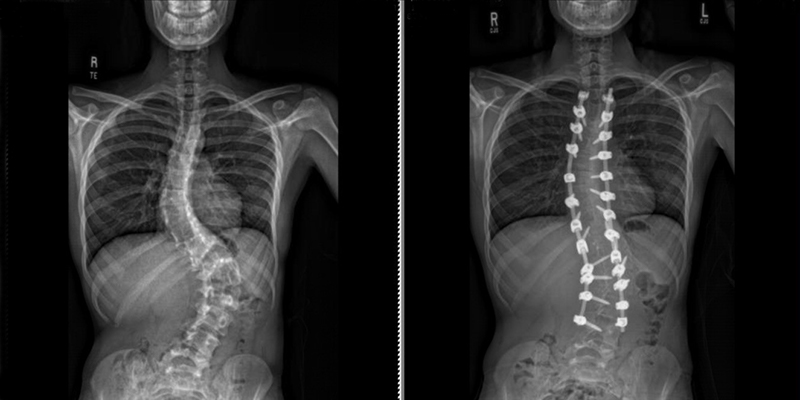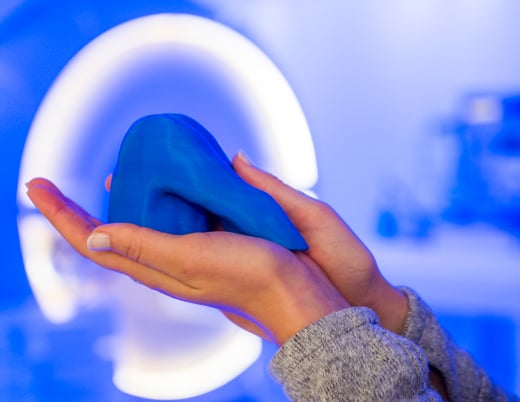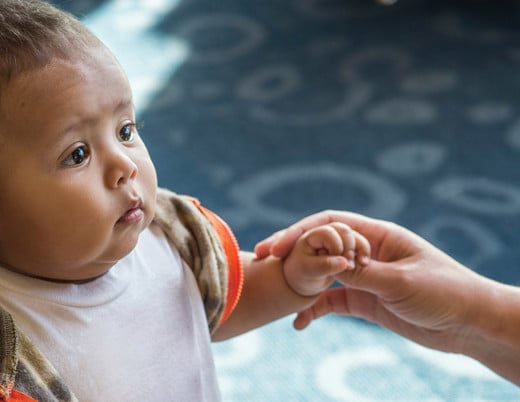Key takeaways
-
Children's Colorado began using gabapentin for multi-modal pain management in 2014.
-
Our researchers were the first to study if multi-modal treatment with gabapentin would improve physical therapy outcomes in this patient population.
-
In addition to meeting physical therapy goals sooner, length of stay decreased in patients who used gabapentin.
Research background: Using gabapentin for posterior spinal fusion recovery
Orthopedic specialists often recommend posterior spinal fusion surgery as a treatment option for patients with severe adolescent idiopathic scoliosis. Doctors have found that gabapentin, part of multi-modal pain management after surgery, is successful in adults and adolescents who undergo posterior spinal fusion surgery. The associated benefits include:
- Reducing pain scores
- Reducing opioid consumption
- Reducing opioid-induced side effects due to decreased opioid usage
In addition to pain management, doctors include mobilization with physical therapy as an important part of postoperative recovery. However, researchers have not yet studied increased functionality in pediatric patients related to the use of gabapentin.
Physical therapy goals for posterior spinal fusion surgery patients
At Children's Hospital Colorado, patients who undergo posterior spinal fusion surgery must meet four standard physical therapy goals before they are discharged home:
- Logroll with minimal assistance from caregiver
- Transition from side-lying to sitting and sitting to side-lying with minimal assistance from caregiver
- Walk 250 feet with standby assistance from caregiver
- Ascend and descend at least three stairs with a railing with standby assistance from caregiver
In July 2014, Children's Colorado providers began using gabapentin as part of a multi-modal pain management approach for patients undergoing posterior spinal fusion surgery.
Researchers in our Orthopedics Institute were the first to examine physical therapy outcomes and length of hospital stay in children and adolescents with idiopathic scoliosis who underwent posterior spinal fusion surgery and received perioperative gabapentin as part of multi-modal pain management.
Research methods: Examining physical therapy outcomes and length of stay
The study evaluated medical records from all Children's Colorado patients aged 10 to 18 years. These patients had adolescent idiopathic scoliosis and underwent posterior spinal fusion surgery between December 2013 and May 2015.
Subjects were condensed down to 108 participants and stratified into two groups that were matched for age, sex and weight. The two groups consisted of:
- Patients who did not receive gabapentin (prior to July 2014)
- Patients who received gabapentin
Perioperative gabapentin administration protocol for patients with idiopathic scoliosis undergoing posterior spinal fusion surgery:
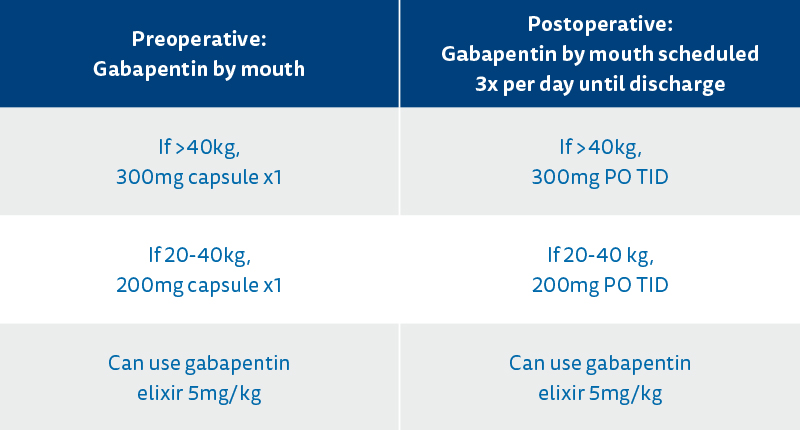
Capsules were used if the patient could swallow pills; otherwise elixir was used.
A physical therapist saw patients once in the morning and once in the afternoon. Progress towards physical therapy goals was recorded daily until the patient met all the goals, at which point the patient was no longer seen by a physical therapist.
Research results: Decreasing the time needed to meet physical therapy goals and discharge readiness
Of the 108 patients in the study:

Goals of physical therapy vs. days to completion of goal:
In the gabapentin group, there was a statistically significant decrease in the time needed to meet all four physical therapy goals and a trend toward a decrease in length of stay:
- Logroll with minimal assistance from caregiver
- Transition from side-lying to sitting and sitting to side-lying with minimal assistance from caregiver
- Walk 250 feet with standby assistance from caregiver
- Ascend and descend at least three stairs with a railing with standby assistance from caregiver
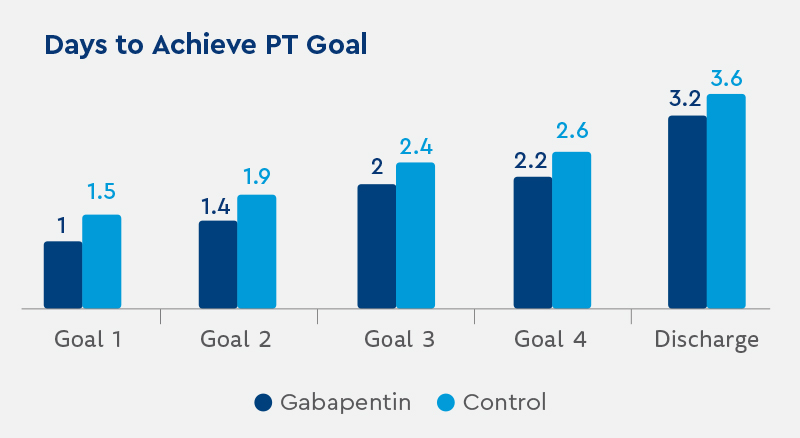
Research conclusion: Summary and recommendations for further evaluation
This study is the first to suggest that the use of perioperative gabapentin in children and adolescents undergoing posterior spinal surgery will decrease the time needed to meet physical therapy goals and discharge readiness.
Researchers recommend a randomized control trial to further evaluate the use of gabapentin to attain physical therapy goals, improve quality of life, and decrease length of stay in this patient population.





 720-777-0123
720-777-0123







